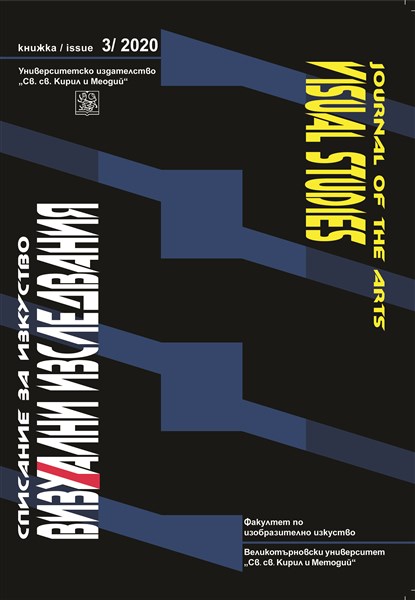Ангелът на кон във византийското изкуство
The Mounted Angel in Byzantine Art
Author(s): Georgy DonchevSubject(s): Fine Arts / Performing Arts, Visual Arts
Published by: Великотърновски университет „Св. св. Кирил и Методий”
Keywords: angel; horse; Byzantine; messenger; herald; winged; incorruptible; iconography; interpretation.
Summary/Abstract: Angels, incorruptible beings of incorporeal matter, according to the teaching of Christianity are the first and most perfect God’s creatures, members of the Church whose Head is Christ. God’s messengers, guardians and heavenly warriors, or belonging to other ranks which were later defined and classified by theologians as found in the different texts of the Old and New Testaments, they do not have a clearly defined appearance and attributes, with the notable exception of Cherubim and Seraphim. Very rarely are flying angels even vaguely mentioned in Biblical texts, still less – winged angels. Rather, the angel – God’s herald, ascends and descends on Jacob’s ladder (Gen 28:12), or rides on a red horse in Prophet Zechariah’s vision (Zech 1:8). According toJewish understanding, the angel was not able to fly as he needed a ladder in order to ascend or a horse in order to travel. Thus, the angel seems to have been thought of by the Jews in rather material terms, and it was only later that his incorruptible nature was specified. However, the winged Greco-Roman deities (such as Nike, Eros etc) and the very ancient images of angels in Zoroastrianism, also winged, apparently influenced Jewish and Christian iconography. So, it was as early as the 5th century that Christian iconography gradually adopted the angel’s appearance as a personage with human features (with the exception of Cherubim and Seraphim) supplied with wings, and this form of representation was applied to all ranks of angelic powers, regardless of style development. Thus, under the influence of ancient Greco-Roman ideas, the angel is depicted as a winged, flying creature. He has been adopted in this form universally by Christian doctrine, regardless of the lack of sufficient official texts. It is only in certain apocryphal texts that occasionally winged angels are specifically mentioned. This Christian as well as Jewish practice – at least during the early centuries of the Christian Era, adopted the type of the winged angel, and wings have become an invariable attribute of angels even when it is a matter of interpreting texts in which the angel as a God’s herald is not mentioned as a winged creature at all.
Journal: Визуални изследвания
- Issue Year: 4/2020
- Issue No: 3
- Page Range: 312-321
- Page Count: 10
- Language: Bulgarian

